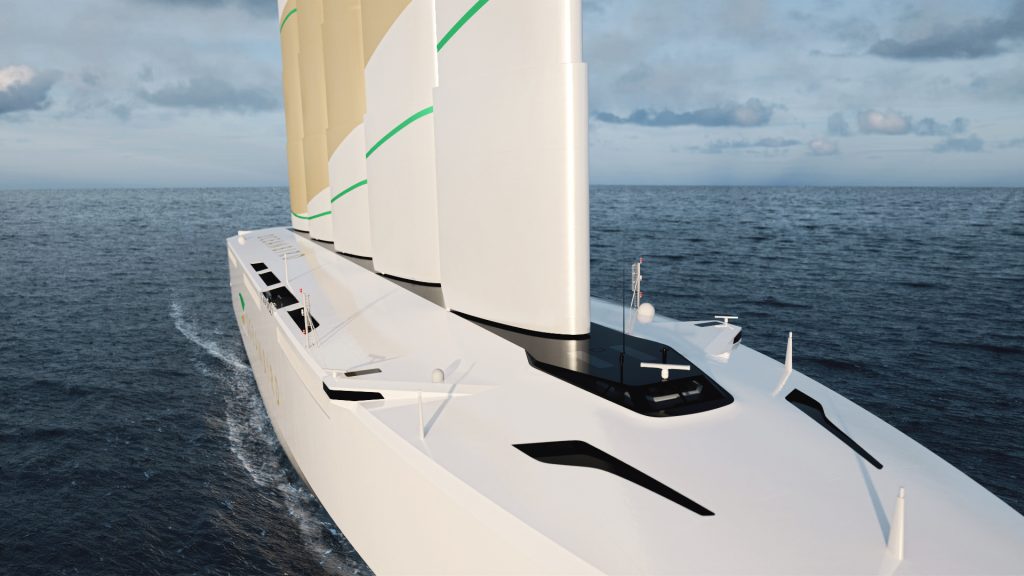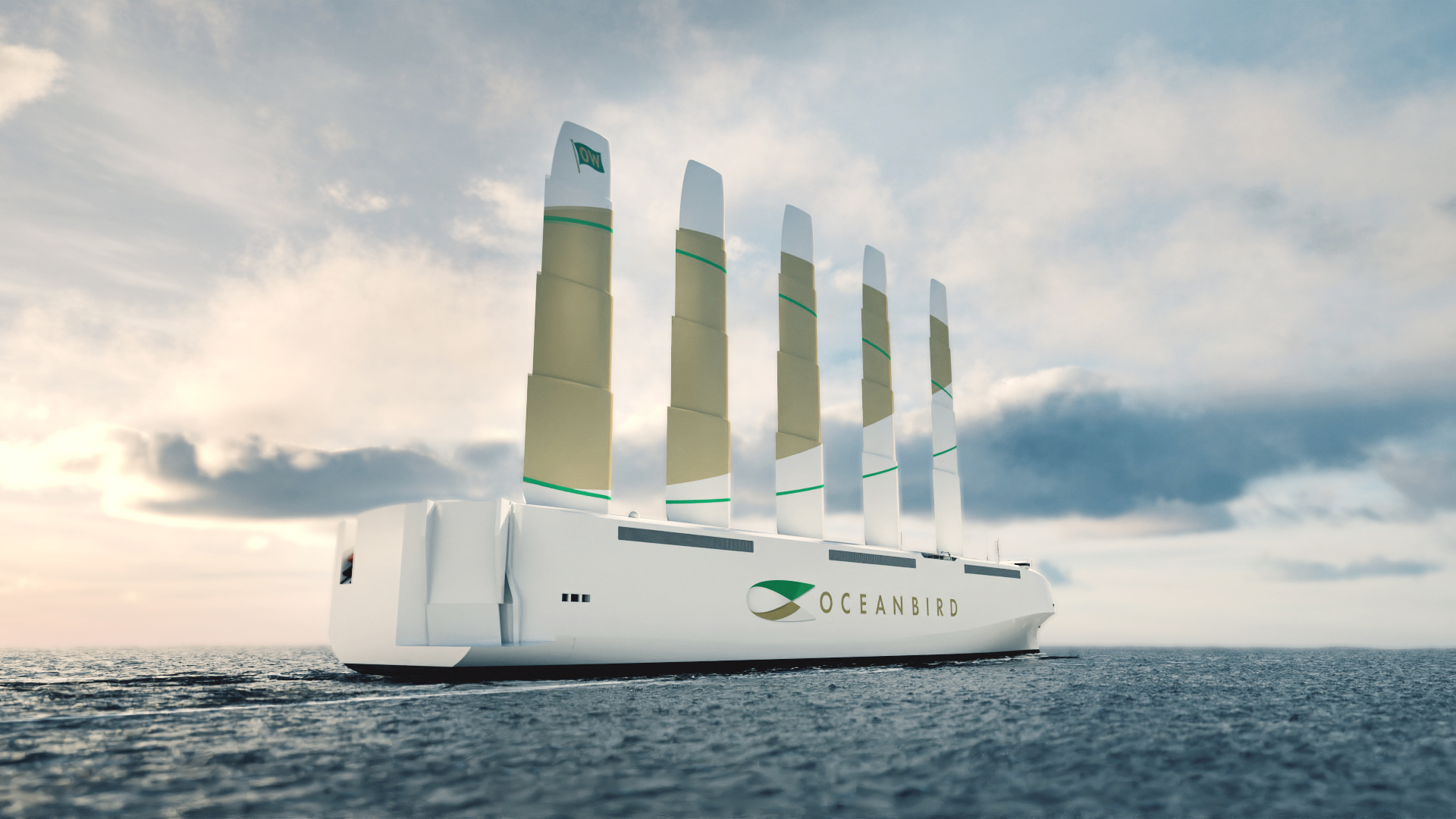Innovative Swedish technology will make it possible to power the large ocean-going vessels by wind, reducing emissions by 90 percent. Oceanbird is a concept for a PCTC (Pure Car and Truck Carrier) with capacity to carry 7,000 cars.
To revert climate change and find ways to transport goods in a sustainable way, the global shipping community needs to shift away from fossil fuel to renewable energy. Oceanbird shows that the maritime industry can bring about major change and that zero-emission shipping is possible, using wind as the main energy source.
“We are proud to present our third iteration of our design, which we have worked with for several years. Shipping is a central function in global trade and stands for around 90% of all transported goods, but it also contributes to emissions. It is critical that shipping becomes sustainable. Our studies shows that wind is the most interesting energy source for ocean transports and with the 80 metre high wing sails on Oceanbird, we are developing the ocean-going freighters of the future.” Per Tunell, COO Wallenius Marine
In April 2018, IMO’s Marine Environment Protection Committee (MEPC) adopted an initial strategy on the reduction of greenhouse gas emissions from ships. The goal is to reduce the total annual GHG emissions by at least 50% by 2050 compared to 2008, while, at the same time, pursue efforts towards phasing them out entirely.
“Our design features a unique combination where the hull and rigs work together as one unit and has been specifically optimized for sailing the oceans. With our configuration the vessel will have an average speed of 10 knots on a typical Atlantic crossing. A North Atlantic crossing with Oceanbird will therefore take around twelve days, compared to the eight days it takes conventional vessels.” Carl-Johan Söder, Ph.D. Naval Architect, Wallenius Marine
Oceanbird is a Swedish collaborative project between Wallenius Marine, KTH (Royal Institute of Technology) and SSPA. It’s supported by the Swedish Transport Administration, which is acting as a co-financier. KTH is addressing the challenges within areas such as aerodynamics, sailing mechanics and performance analysis. SSPA is contributing with expertise within the development and validation of new testing methods, aerodynamic and hydrodynamic simulation methods and risk simulation. It is a cluster collaboration with experts from the public and private sectors. This expertise will be used to develop sailing vessels in other vessel segments.
“The development project has come very far. We have started testing with 7 metre models in open water recently, and will continue this fall. The design will be ready for orders in 2021 and we are aiming for a possible launch in 2024.” Richard Jeppsson, VP Commercial & Partnership, Oceanbird






